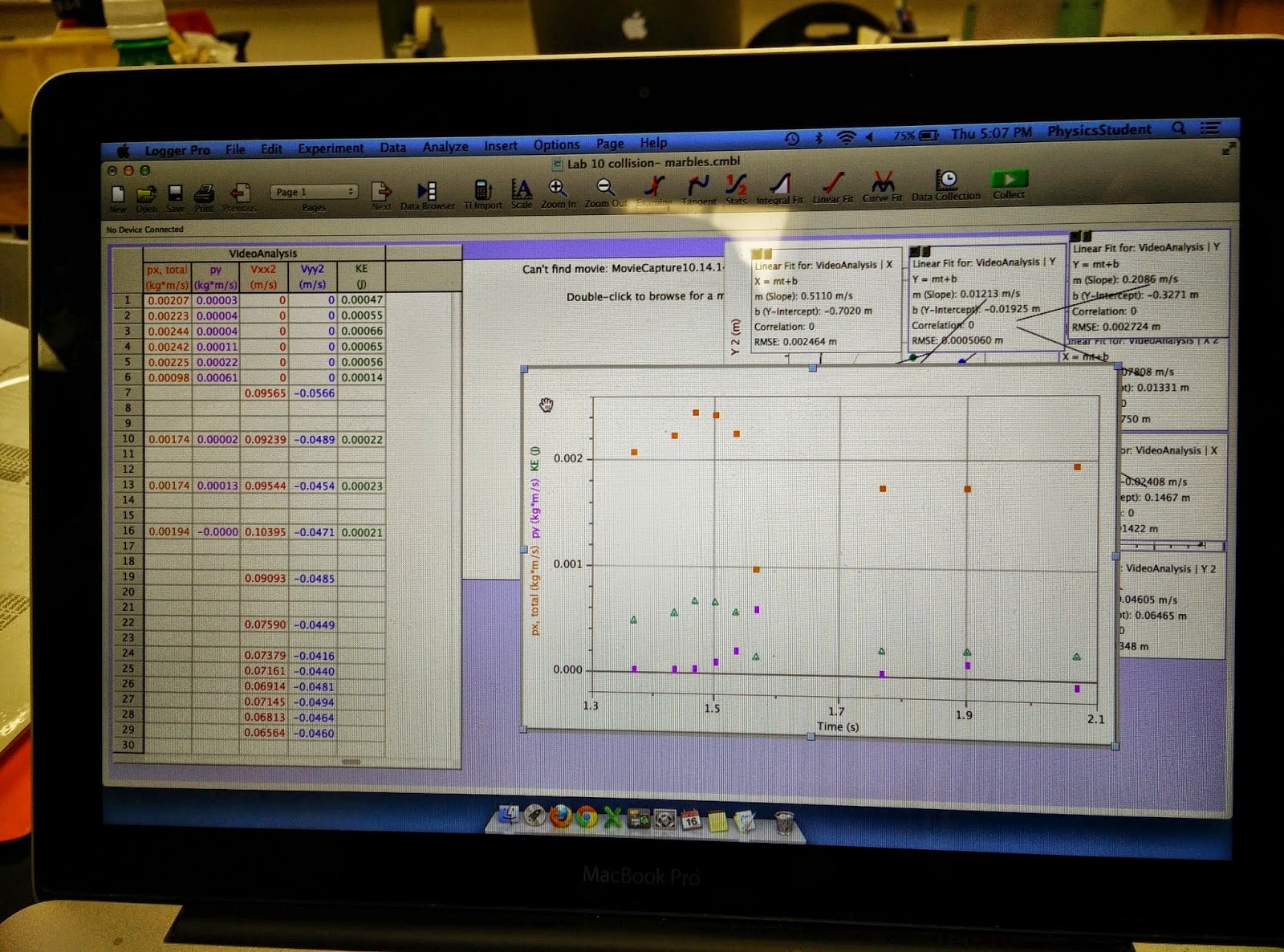The purpose of this lab is to understand how momentum and energy change in two dimensional collision.
Apparatus:
The bottom plate was where we collide the balls, and all the balls could roll without slipping on the plate. Above the plate was an camera that would capture the motion of all the balls before and after collision.
The video of the balls' motion was recorded into our computer, and we used logger pro to create velocity vs. time graph corresponded to the video.
The following is an example of how we pin the position of the balls at every instant:

Data and Data Analysis:
Steel balls collision
The following is the position vs. time graph of the collision of metal balls (small steel ball's mass=10.38g; big steel ball's mass=28.78g)
We can simply find the velocity of two balls before and after collision by find out the slope of the position functions of time.
Before the collision, 28.7g steel: Vx=0.6107m/s Vy=0.007932m/s
After the collision, 28.7g steel: Vx=0.006845m/s, Vy=0.2147m/s;10.3g steel: Vx=0.1759m/s, Vy=0.04866m/s
The following is the table contains the calculated column we needed to compare the energy and momentum before and after collision(p column is momentum; X and Y column are the kinetic energy in x-axis and y-axis direction, X2 and Y2 is the kinetic energy of the initially resting ball):
Using the data from above, we can furtherly create the following graph:
The graph's y-axis is in very tiny scale, and the graph shows that momentum and energy are both an almost constant value.
Marbles collision
The following is the position vs. time graph of the collision of metal balls (small marble's mass=10.38g; big marble's mass=28.78g)
We can simply find the velocity of two marbles before and after collision by find out the slope of the position functions of time.
Before the collision, 20.0g marble ball: Vx=0.511m/s Vy=0.01925m/s
After the collision, 4.5g marble ball: Vx=0.02408m/s, Vy=0.3271m/s
4.5g marble ball: Vx=0.07808m/s, Vy=0.0605m/s
The following is the table contains the calculated column we needed to compare the energy and momentum before and after collision(p column is momentum; X and Y column are the kinetic energy in x-axis and y-axis direction, X2 and Y2 is the kinetic energy of the initially resting ball):
Using the data from above, we can furtherly create the following graph:
The graph's y-axis is in very tiny scale, and the graph shows that momentum and energy are both an almost constant value.
Conclusion:
The collisions in this lab were elastic collision, and through the lab, we found the energy and momentum in the system were both conserved.







No comments:
Post a Comment